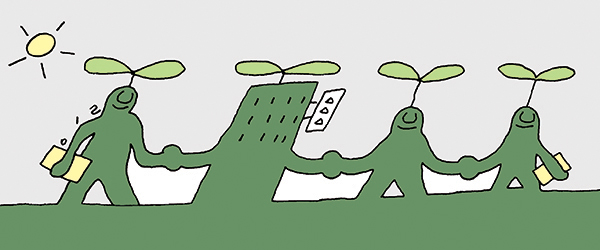The growth problem grows

“Korea became one of the top seven exporters in the world.” A former minister said that as he looked back on the five years of the Lee Myung-bak administration. We knew from early on it would be very hard to fulfill Lee’s core pledge of 747: achieving 7 percent annual growth, per capita income of $40,000 in 10 years and joining the top seven economies. But at least when it came to exports, Korea became one of the top seven powers.
In fact, President Lee focused on exports more than any other recent president. He understood the role of exports in Korea’s economy and aggressively stimulated them. He was a master of exchange rates. He personally oversaw the currency policy. When the value of won soared, he constantly checked with ministers to see if the exchange rate was acceptable. As a former corporate CEO, he understood the importance of exchange rates, which determine the unit price of exported goods. Thanks to various factors, the Korean economy benefitted from a low won for the past five years. The won-to-dollar exchange rate was the lowest except for during the foreign exchange crisis of the late 1990s and the won-to-yen rate was the lowest in history.
The president led the export drive from the front line, but his overall economic achievement fell far short of his pledges. The average growth in the five years of the Lee administration was 2.9 percent. There were two crises in the period: the global financial crisis that started in 2008 and the ongoing European crisis. However, in the same period, the growth rate of the global economy was 2.88 percent, so the Korean economy performed not much better than the global average. While a low won value boosted exports, domestic consumption shrunk because of growing household debts. An insider at the Bank of Korea said we’ve forgotten the fact that the economy can only fly when its two wings - exports and domestic consumption - move together.
Last year’s growth was 2 percent. It was the lowest the economy has seen except for the negative 1.9 percent growth in 1980 during the second oil shock, the negative 5.7 percent growth in 1998 during the foreign currency crisis and 0.3 percent growth in 2009 due to the global financial crisis. The government should have make various efforts to boost the economy, but because of the presidential election of last December, no full-scale economic stimulus plans were prepared.
The growth rate is more than a mere number. When the rate goes up by 1 percent, we have 60,000 to 70,000 more jobs and an additional 2 trillion won ($1.8 billion) in tax revenue. When the economy grows smoothly, we will have an unexpectedly easy solution to the household debt problem and financing Park Geun-hye’s welfare promises. But the new administration is set to start very soon and there is no discussion about economic growth. A securities company executive said, “As the low-growth trend continues, economic entities are losing confidence. And that is a sign of a crisis in the making.” Economic growth is no panacea. However, hardly any economic problem can be dealt with without growth.
*The author is a deputy business editor of the JoongAng Ilbo.
By Lee Sang-ryeol










with the Korea JoongAng Daily
To write comments, please log in to one of the accounts.
Standards Board Policy (0/250자)